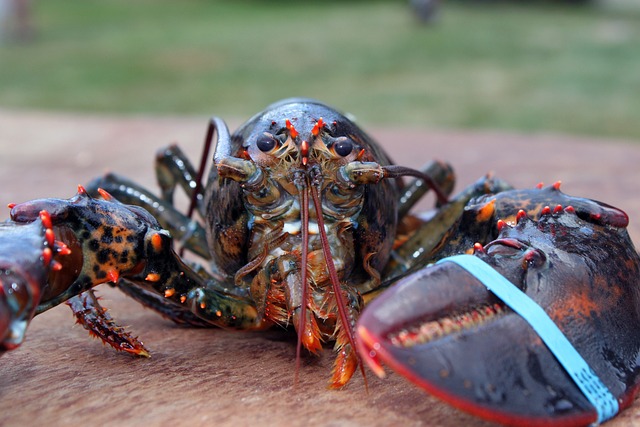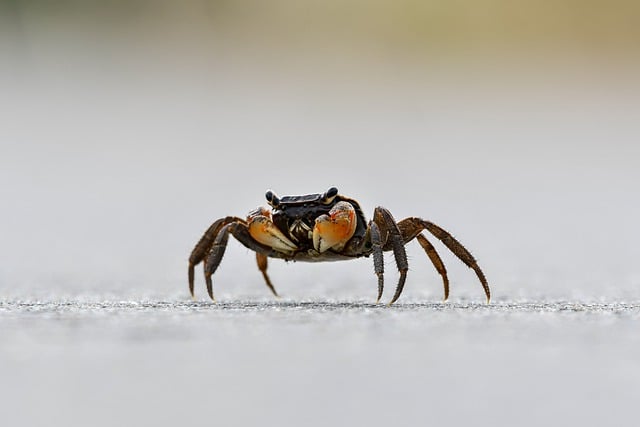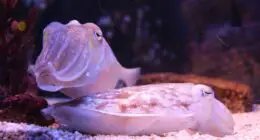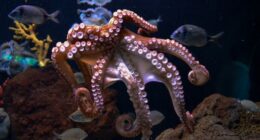Lobsters are known for their large size, firm texture, and sweeter taste. They have long bodies with two large claws and a spiny shell. Crabs have a rounder body shape with ten legs and two pincers
What is a Lobster

Picture this: a creature with an elongated body, covered in a tough exoskeleton that shines in hues of vibrant reds, blues, and greens. Meet the lobster – a true marvel of the sea! Lobsters belong to the family Nephropidae and are characterized by their two large claws, beady eyes perched on stalks, and multiple pairs of legs.
Found primarily in cold ocean waters around the world, lobsters have long been synonymous with luxury dining experiences. These fascinating crustaceans can grow up to impressive sizes – some even reaching lengths of over three feet! But don’t let their size intimidate you; beneath those formidable claws lies tender meat that’s renowned for its delicate flavor.
Lobsters are notorious for their scavenging skills. They feed on anything from small fish and mollusks to algae and detritus found on the ocean floor. With their keen sense of smell and sharp pincers, they’re able to catch prey or scavenge for food with ease.
Did you know that lobsters have an interesting way of growing? As they outgrow their old shells, they undergo molting – shedding their hard outer layer so they can form a new one. During this vulnerable period, lobsters hide away until their new shell hardens enough to protect them once again.
What is a Crab?

Crabs are fascinating creatures that belong to the crustacean family. They can be found in oceans, freshwater lakes, and even on land. With their hard exoskeletons and distinct sideways scuttling movement, crabs have become iconic creatures of the sea.
One unique feature of crabs is their ability to regenerate limbs. If they lose a claw or leg during a fight or escape from predators, they can grow it back over time. This remarkable adaptation allows them to continue thriving in their environment.
There are various species of crabs with different sizes and colors. From the tiny pea crab that measures only a few millimeters to the giant Japanese spider crab with its leg span reaching up to 12 feet, each one has its own characteristics and habitat preferences.
Crabs are omnivores, meaning they eat both plants and animals. Their diet typically consists of algae, small fish, mollusks, worms, and even dead organisms that they find along the ocean floor or shoreline.
These crustaceans play an important role in marine ecosystems as scavengers by consuming decaying matter and helping to maintain balanced populations within their habitats.
In addition to being fascinating creatures in nature’s tapestry, crabs also hold culinary significance worldwide. They are considered delicacies in many cuisines around the world due to their tender meaty flesh that ranges from sweet to savory flavors depending on the species.
Lobster Vs. Crab – Key Differences
| Aspect | Lobster | Crab |
|---|---|---|
| Taxonomy | Lobsters belong to the order Decapoda and the suborder Astacidea. | Crabs also belong to the order Decapoda but are classified in different infraorders and superfamilies. |
| Size | Generally larger, with an average size ranging from 6 to 24 inches (15 to 60 cm). | Crabs vary widely in size, with some small species measuring a few inches and larger species exceeding a foot in width. |
| Body Shape | Wider and more massive body with a straighter abdomen. | Typically have a broad, flattened body and a more curved or rounded carapace. |
| Appendages | Two large, prominent claws (crusher and pincher) and four pairs of walking legs. | Two large pincers or claws and eight walking legs, which include smaller claw-like appendages. |
| Shell Texture | Has a harder exoskeleton, which can be tough to crack and may require tools for consumption. | Also has a hard exoskeleton but is generally easier to crack, especially the smaller legs and claws. |
| Tail Meat | The tail meat is the primary edible part of the lobster and is known for its sweet and firm texture. | Crabs do not have a distinct tail; the most sought-after meat is typically found in the body and claws. |
| Claw Meat | Lobster claws have a significant amount of meat, especially the large crusher claw. | The large pincers or claws of crabs contain meat, which is often used in culinary dishes. |
| Flavor | Lobster has a distinct and rich flavor with a more pronounced seafood taste. | Crab meat is also flavorful, but the taste can vary depending on the species and preparation. |
| Cooking Methods | Lobsters are often boiled or steamed whole and are typically served as lobster tail, lobster bisque, or in lobster rolls. | Crabs are prepared in various ways, including boiling, steaming, and sautéing, and are used in dishes like crab cakes and crab legs. |
| Culinary Uses | Lobster is considered a delicacy and is often used in gourmet dishes, seafood platters, and fine dining preparations. | Crab is a versatile seafood used in a wide range of dishes, including crab cakes, crab salad, and various crab-based soups and stews. |
| Cost | Lobster is relatively expensive, especially for larger specimens, and is considered a luxury seafood item. | Crabs vary in price, with some species being more affordable than others, making them accessible to a range of consumers. |
| Sustainability | Lobster populations are managed to some extent, but sustainability practices vary by region and species. | Crab sustainability practices also vary, but some crab fisheries are known for sustainable management. |
| Species Diversity | There are several species of lobster, including the American lobster, spiny lobster, and rock lobster, each with distinct characteristics. | Crabs encompass a vast variety of species, each with its unique features, flavors, and culinary uses. |
Nutritional Value of Lobster Vs. Crab
Lobster (100 grams, cooked):
- Calories: 89 kcal
- Protein: 20.85 grams
- Total Fat: 0.91 grams
- Saturated Fat: 0.122 grams
- Cholesterol: 72 mg
- Omega-3 Fatty Acids: 0.225 grams
- Carbohydrates: 0.2 grams
- Dietary Fiber: 0 grams
- Sugars: 0 grams
- Vitamins and Minerals:
- Vitamin B12: 2.17 micrograms (91% DV)
- Zinc: 2.39 milligrams (22% DV)
- Selenium: 40.2 micrograms (73% DV)
- Phosphorus: 172 milligrams (12% DV)
Crab (100 grams, cooked):
- Calories: 83 kcal
- Protein: 19.65 grams
- Total Fat: 1.19 grams
- Saturated Fat: 0.172 grams
- Cholesterol: 77 mg
- Omega-3 Fatty Acids: 0.345 grams
- Carbohydrates: 0 grams
- Dietary Fiber: 0 grams
- Sugars: 0 grams
- Vitamins and Minerals:
- Vitamin B12: 10.3 micrograms (429% DV)
- Zinc: 2.12 milligrams (19% DV)
- Selenium: 41.4 micrograms (75% DV)
- Phosphorus: 160 milligrams (11% DV)
Note: DV (Daily Value) percentages are based on a 2,000-calorie daily diet.
Both lobster and crab are excellent sources of high-quality protein and are low in saturated fat. They provide essential nutrients, particularly vitamin B12, zinc, selenium, and phosphorus.
While crab has higher levels of vitamin B12, lobster is still a valuable source of this essential vitamin. The nutritional value can vary slightly depending on the specific species and preparation method.
Image Credits
Featured Image By – WikiImages from Pixabay









